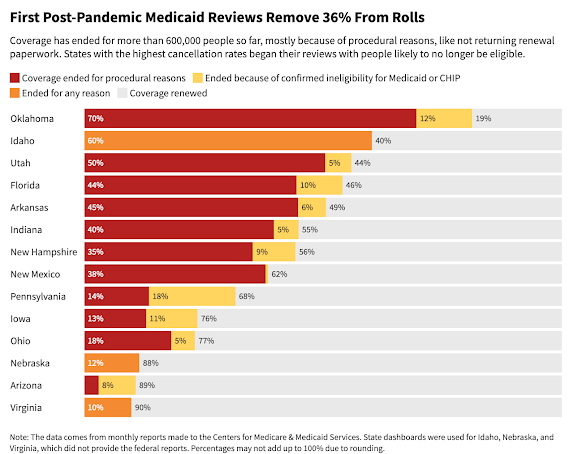Using law enforcement to push addicts into treatment was dismissed some years ago as ineffective, unsupportive and "not policing's role." In his idea
piece for The Atlantic, Sam Quiñones, perhaps the leading journalist covering America's drug problem, suggests the extreme availability and potency of today's drugs have changed the game: "In a time of fentanyl and meth, we need to use law enforcement differently—and more often." Here's a condensation:
In Louisville, Kentucky, not long ago, I heard the story of a woman named Mary. She grew up middle-class, cheerful at times, though she struggled with depression. She took antidepressants. After her marriage broke up in 2006, Mary switched to pain pills. . . . She had a son in 2016. A couple of years later, methamphetamine from Mexico
flooded Louisville, and she began using meth too. . . . Mary would show up on rare occasions, then head back to the street. . . . She was living in a tent encampment and refused to leave [Mary's mother called the police] . . . . But the police could do nothing. . . . Early one morning in 2022, she froze to death in a tent.
The drugs that are prevalent now are
different from what they were even a decade ago: more potent, easier to find, cheaper, and deadlier. Most people seem to have some inkling of this. Still, having spent more than a decade reporting on illicit drug distribution and use, I believe that few people truly understand the extent of the change, or its implications. . . . If we’re serious about curbing use of these most damaging illicit drugs, I believe we need to move to an approach that both the left and the right may find uncomfortable. We need to use arrests and the threat of confinement to break the hold of addiction. We also need to transform jail, and change what it means for people with a drug addiction to be in jail.
Over the past 40 years, the prevailing views on drug policy have slowly gone from one extreme to the other. In the decades following President Ronald Reagan’s '
War on Drugs.' . . . The old Reagan-era approach was displaced by a new convention, that of '
harm reduction.'
Decriminalization of drug possession and use followed, at least partially, in some
jurisdictions. . . . Compassionate intentions may have fueled this progression, and many of the early steps made sense. Yet as this philosophical shift was happening, so too were seismic changes in the supply of illegal street drugs.
Two synthetic drugs—fentanyl and methamphetamine, both made in Mexico—have flooded the United States. They are produced year-round by sophisticated traffickers who have access through Mexican ports to global chemical markets. No plants or growing seasons are necessary; the supply is massive, cheap, continual, and difficult to suppress. . . . Users could live for decades on heroin. But as one Kentucky addict in recovery told me a few years ago, when fentanyl settled into his region, 'There’s no such thing as a long-term fentanyl user.' He recently relapsed and died of what is believed to be a fentanyl overdose.
Methamphetamine has achieved
alarming potency over the past decade, and the way it’s made has changed. Ingredients now include an
ever-evolving lineup of toxic industrial chemicals. Meth use is now often accompanied by rapid-onset symptoms of mental illness—paranoia, hallucinations—symptoms that in many cases seem to far outlast the high itself.
Meth and fentanyl upend many of the prevailing beliefs about drug policy. Perhaps the most important is that people must be 'ready' to leave the street for treatment. . . . But when you zoom out, harm reduction alone looks perverse. . . . Take Narcan: It keeps people alive and is necessary in the moment of overdose. But the harm-reduction model holds that we should keep reviving people who overdose and then do nothing more than hope they come to their senses and opt into treatment."
Taking away a person’s freedom is never something to be done lightly. But once addicted to fentanyl or the new meth, many users are not 'free' to choose treatment—or any path out of addiction—in any meaningful way. Time away from these drugs, I believe, can help them regain their agency. Robert Neri, of
WestCare, told me, '“Fentanyl is so powerful. Where somebody might have been able to pull their lives together on heroin' many fentanyl addicts need structure, and time 'away from access to the drug.'






















